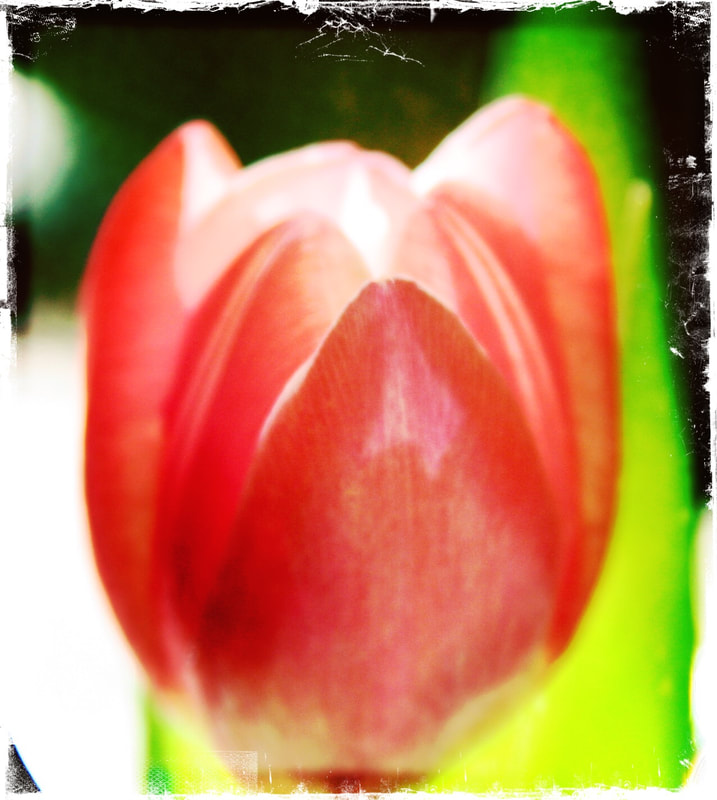ASSAY: A JOURNAL OF NONFICTION STUDIES
5.1
5.1
|
I had not yet proposed a writing course on gender to my department when a student, stopping by my office, noticed the copies of Whipping Girl, Gender Failure, and Gender Outlaw stacked on my desk. One eyebrow shot up. “Why are you reading all of this trans stuff?” he asked. He was in another creative nonfiction class I taught, where he’d told the room on the first day that his name was Greg, he, his, and him—not the name on the roster I’d read or the pronouns it suggested. (Now, on the first day of class, I send the roster around the room and ask students to sign-in with the names they use). The intonation in his question was understandable: sitting behind the cluttered desk, nearby a framed picture of her husband and young daughter, was a white, cis woman. A woman in her late 30’s, who a year earlier, might not have known what cis-gender meant.
I could have offered Greg the stiff academic answer that sprang to mind: “Marginalized groups can utilize writing as a way to resist oppression. The LGBTQ community and its authors are a vital part of society and literature and the creative writing classroom needs to do a better job reflecting that.” Feeling self-conscious, I instead answered, “I’m researching for a writing class that will explore gender for the entire semester.” Greg’s eyebrow relaxed. “Oh,” he said. “You should read Redefining Realness by Janet Mock.” Thanking him, I wrote it down, and we resumed our previous conversation. Where I teach in the heartland of Nebraska, often listed as one of the top 10 most conservative states in the nation, the bulk of the students who select English classes have been raised in white, middle-class families; the same is true of the bulk of our creative writing faculty. It’s important to note, however, that the university as a whole reflects more diversity, with 38% of its 2017 freshman class being first-generation college students and 32% being “ethnically diverse” (“About UNO: Facts and Figures”). Still, the fact that Greg was one of two students of color and the only student to publicly identify as trans in our class together was not surprising to me. In retrospect, it was also a reflection of my curriculum, which—other than the occasional and over-relied upon essay by the likes of David Sedaris, James Baldwin, or Dorothy Allison—was not truly LGBTQ-inclusive. The most recently published survey by GLSEN reports that less than twenty-three percent of K-12 students are exposed to positive representations of LGBTQ people or issues in high school (“2015 National School Climate Survey”). Other than in California and with the passage of the FAIR Education Act, few public schools include LGBTQ-inclusive curriculum, and seven states have laws (referred to as “no promo homo” laws) that explicitly prevent educators from teaching any LGBTQ issues. Thus, when students arrive at college and take seats in our classrooms, they are likely ignorant about the significant historical, cultural, and artistic contributions of the LGBTQ community; they’ve been immersed in heterosexist classroom norms since kindergarten. I recently heard the poet Ching-In Chen ask a room of approximately sixty college students, academics, and writers at a writing conference if they “were assigned to read any writer who publicly identified as trans, nonbinary and/or intersex in an undergraduate creative writing and/or literature class.” Only a handful of people replied in the affirmative. The danger should be apparent: Michelle L. Page writes in “From Awareness to Action: Teacher Attitude and Implementation of LGBT-Inclusive Curriculum in the English Language Arts Classroom” that ignoring LBGTQ writers in our curriculum renders those communities “invisible” and “tacitly condone[s] homophobia” (13). Further, a failure to explore LGBTQ issues is “likely related to discriminatory practices that compromise school safety and students’ ability to learn” (Snapp et al. 251). It’s known widely that gender diverse students experience considerably higher levels of harassment than straight, cis students. The “AAU Climate Survey on Sexual Assault and Sexual Misconduct (2015)” reported that 50% to 75% of LGBTQ college students experience sexual harassment and/or assault. LGBTQ students suffer statistically significant rates of bullying, school drop-out, depression, drug use, self-harm, and suicide. However, the addition of LGBTQ-inclusive curriculum has already shown positive results when implemented in California high schools: “all students, including heterosexual, LGBTQ, and gender non-conforming students felt safer, experienced less victimization, reported hearing fewer homophobic slurs, and experienced greater peer acceptance” (Snapp et al. 251). My university’s nondiscrimination statement, which appears in the student handbook, on course syllabi, and flyers for campus events, states that the university will not discriminate based on sexual orientation or gender identity, among other things. However, discrimination against gender diverse students takes many forms, some of which are overt and some of which are subtle, and some of which I wouldn’t have recognized before I began my own education of gender identity—an education that is continuing: “If teachers and administrators truly respect and care for all students, we must be willing to transform our curricula to address issues of sexual orientation and gender identity” (Page 13). Straight, cis faculty like myself must stop using a lack of “comfort, awareness, and experience” with LGBTQ topics as an excuse not to teach an LGBTQ-inclusive curriculum (Page 3-5). In the years between my conversation with Greg and my first teaching this class, I continued my gender identity education in earnest: I attended Safe Space training (which includes LGBTQIA+ Basics Orientation and an Active Ally Workshop), researched pedagogical approaches to teaching LGBTQ literature, read Redefining Realness (2014) and dozens of other books and essays that explore gender, and sought guidance from friends, colleagues, scholars, and students. I embraced the “pedagogical shifts” (Helmer 35) that transform classrooms into a place “to explore traditionally silenced discourses and create spaces for students to examine and challenge the hierarchy of binary identities that is created and supported by schools, such as jock-nerd, sciences-arts, male-female, white-black, rich-poor, and gay-straight” (Meyer 27). In order for straight teachers to “transform their praxis” (Meyer 15) into one that aligns with a queer theoretical approach, like the one Elizabeth J. Meyer describes in “’But I’m Not Gay’: What Straight Teachers Need to Know about Queer Theory,” they needn’t alter or exhibit their sexuality. Rather, transforming one’s praxis “simply calls for the education of educators and requires their active participation regarding how ‘normalcy’ is defined” (Zacko-Smith and Smith 77). It’s worth repeating that our own education as educators is key; too often, LGBTQ writers and experiences are rendered to the margins of course content, viewed by students as “other” and “abnormal,” reinforcing heteronormativity despite educators’ best intentions (Page 11; Snapp et. al 251-4; Zacko-Smith and Smith 76-77). I don’t claim to be an expert on gender identity, but I know creative nonfiction, I assure my students, and it’s an empowering genre, ripe for the work we’re setting out to do together. Barrie Jean Borich in “The Craft of Writing Queer” compares the “fluidity of gender in the queer community” to the “shifting genre parameters of this new-but-old literary category.” Accordingly, creative nonfiction is a genre that can challenge heteronormative storytelling while also opening up the umbrella for non-normative stories, not just in subject matter but also in style and form. In this article, I outline one approach to bringing LGBTQ writers from the margins to the center of the creative nonfiction classroom.
|

